Guidebook for Urban Oilfields
A Study of Inglewood Oil Field
 Sunset View of Inglewood Oil Field
Sunset View of Inglewood Oil Field
Guidebook for Urban
1
© Citizens of the Planet
Oilfields
Did you know there are 26 oil and gas fields and more than 5,000 active and idle wells in LA?


Did you know there is a resolution to prohibit new oil drilling at the Inglewood Oil Field — and phase out existing drilling over the next 20 years?
What is the future of the Inglewood Oil Field?

2
Acknowledgments
We acknowledge the ancestral territories of the Chumash, Tongva, Three Fires Peoples (Odawa, Ojibwe, Bodewadami), Meskwahkiasahina, Peoria, and Wyandot peoples as traditional stewards of this land. In addressing urban oil fields sustainably, we honor their cultural heritage and connections to the land, integrating Indigenous knowledge and environmental respect in our practices. Committed to ethical restoration and collaboration with Indigenous communities, we embrace reconciliation, environmental justice, and community partnership, aiming for a sustainable future that honors the land and its people.
We express heartfelt thanks to those contributing to our Master’s project, especially our advisor for invaluable guidance. Appreciation extends to all professors, friends, and colleagues who enriched our experience, underscoring the project’s collaborative achievement.
Guidebook for Urban Oilfields 3
Research Team
Diana Martinez
Feixue Qi
Katherine Geraghty
Veronika Lubeck
Yaqi Liang Advisor
Lisa DuRussel
Sasaki Team Faculty
The School for Environment and Sustainability (SEAS)
President Ono’s Inauguration Poster Session
Inglewood and Culver City community
Rackham Graduate Studies
Catie Kitrinos, Univ. of Massachusetts Amherst
Dr. Benjamin Blackman, UC Berkeley
Dr. Kerry Byrne, Cal Poly Humboldt
Dr. Erika Zavaleta, UCSC
Michael Kost, SEAS
Dr. Allen Burton, SEAS
Dr. Kyle Whyte, SEAS
Machiko Yasuda
Veronica Martinez
Friends and Family
4
Guidebook for Urban Oilfields 5
Contents Introduction Recommendations How to create a circular system of landscape transition? #1 Enhance Soil Health Deploy Plant Remediation Recover with Microorganisms Apply Biosolid Soil Enrichments #2 Activate Community Participation Investigate Urban Biodiversity Conservation Urban Farming Initiatives After Soil Remediation #3 Utilize Energy & Infrastructure Solar Energy Potential Geothermal Energy Potential Conclusion How to measure the success of landscape transition? 8 16 23 25 27 33 37 39 43 48 6
Guidebook for Urban Oilfields 7
Introduction
8
Introduction
Revitalizing Urban Oil Fields: A Guidebook for Sustainable Landscape Transition
Impacts & Prospects: Oil Extraction in California
The legacy of oil extraction, a major contributor to our warming planet, has profoundly shaped environments, particularly in places like California, a once-thriving hub for the United States’ oil industry since the first well was struck in 1892 (Witt, The end of oil drilling in L.A). This discovery in Los Angeles catalyzed rapid urban expansion and population growth, inadvertently embedding residents within a landscape marred by unregulated emissions and pollutants. Over the years, Los Angeles has masked its environmental scars with urban aesthetics, yet the undercurrent of its oil-dependent past persists (Witt). Now, with the rising tide of carbon neutrality, California embarks on a transformative journey to cease oil extraction over the next two decades, marking a significant pivot from its fossil-fueled history towards a more sustainable future.
Guidebook for Urban Oilfields 9
Oil Well Status Across California in 2023
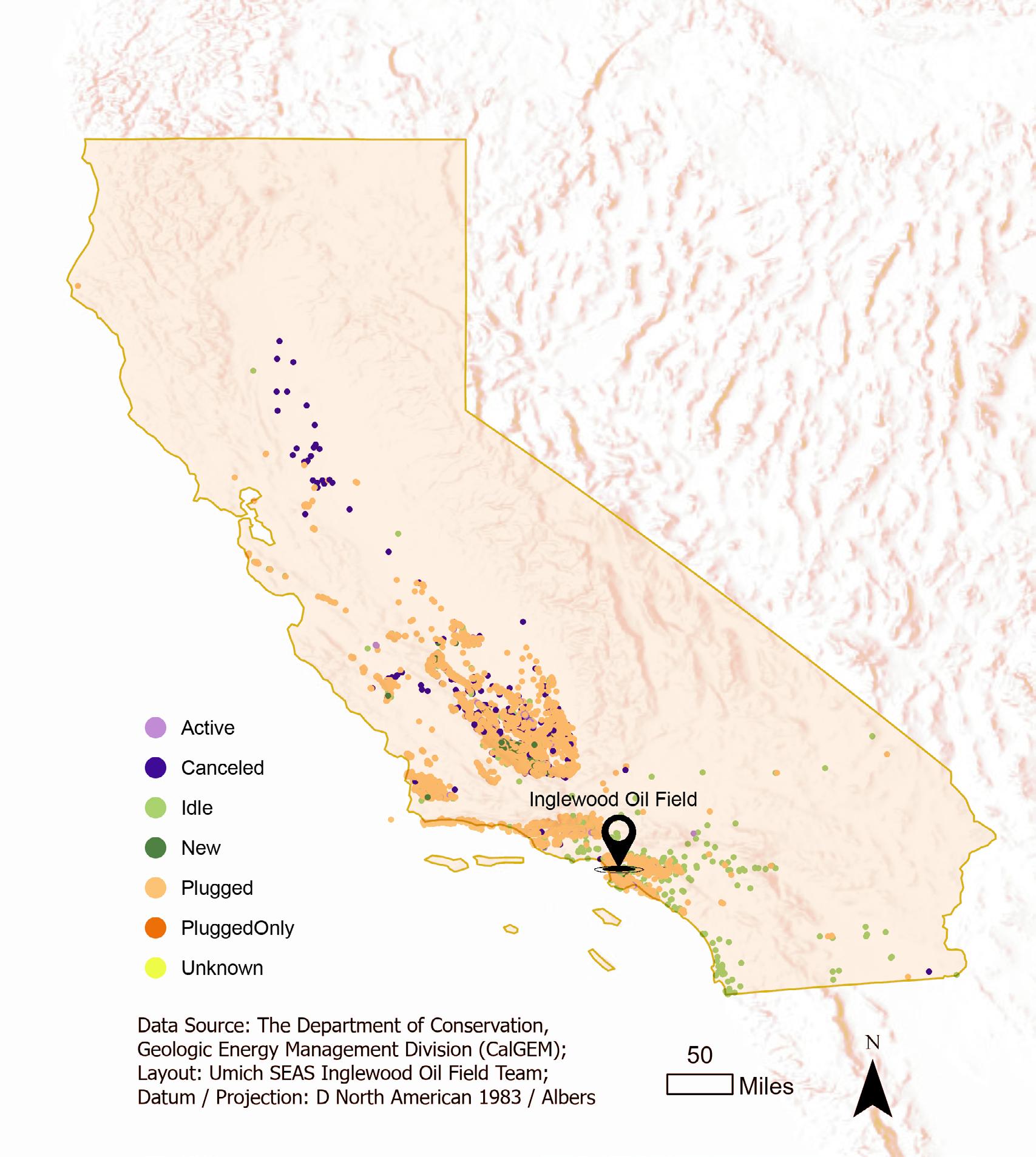
10
Presence of Non-active Urban Oil Wells
The City of Los Angeles has masterfully hidden its urban oil wells, weaving them into the city’s tapestry to conceal their existence. This approach reflects the city’s intricate dance with its oil-producing history, even as it steps into a future where such sites may no longer define its landscape. Notable among these hidden vestiges are the Packard Well, West Pico Drill Site, Beverly Center, and the La Brea Tar Pits, each with its own story in the city’s tapestry.
This Guide: A Resource for Professionals
This project embarks on a journey to transform the Inglewood Oil Field, a vast urban expanse poised for decommissioning. Its history of disrupting both land and community with health and environmental challenges now inspires our vision to reinvent it as a sustainable, net-zero impact environment, harmoniously integrated with its community. Our ambition stretches beyond Inglewood, setting a precedent for transforming urban oil fields nationwide into vibrant, restored spaces that align with the shift towards cleaner energy.
We’ve compiled a suite of strategies to foster a deep understanding that will steer the ecological rejuvenation of these spaces. The essence of our work will materialize in a detailed report, and a hands-on guidebook, crafted for stakeholders like Sasaki, local authorities, and all who are vested in redefining urban oil fields across the U.S. These resources are conceived as a holistic toolkit, laden with insights and approaches to inspire stakeholders to reenvision and revitalize these landscapes, ensuring they enhance their communities and the environment sustainably.
Guidebook for Urban Oilfields 11

 Packard Well Site, West Pico Drill Site and Beverly Center sites.
Photo: Inglewood Research Team
La BreaTar Pits located in Hancock Park - summer season.
Packard Well Site, West Pico Drill Site and Beverly Center sites.
Photo: Inglewood Research Team
La BreaTar Pits located in Hancock Park - summer season.
12
Photo: Inglewood Research Team
Guidebook for Urban Oilfields 13
Recommendations
How to create a circular system of landscape transition?
14
Shaping Sustainable Futures
Site Visit in Los Angeles
The Inglewood Oil Field Case Study
Our research project is a pilot initiative aimed at guiding professionals and stakeholders in transforming urban oil fields into sustainable landscapes, focusing on the Inglewood Oil Field. Our initial site visit embarks on an analytical exploration of urban oil fields, focusing on discerning patterns in land topography, ecological conditions, and the demographics surrounding extraction sites. We employ a blend of qualitative methods - such as surveys, in-person introductions to the Inglewood Oilfield, and urban wildlife observations - and quantitative tactics, including promotional activities with retail outlets or schools and air quality assessments, to forge a comprehensive understanding and framework for this transition.
Site Visit Research Methods

Guidebook for Urban Oilfields 15

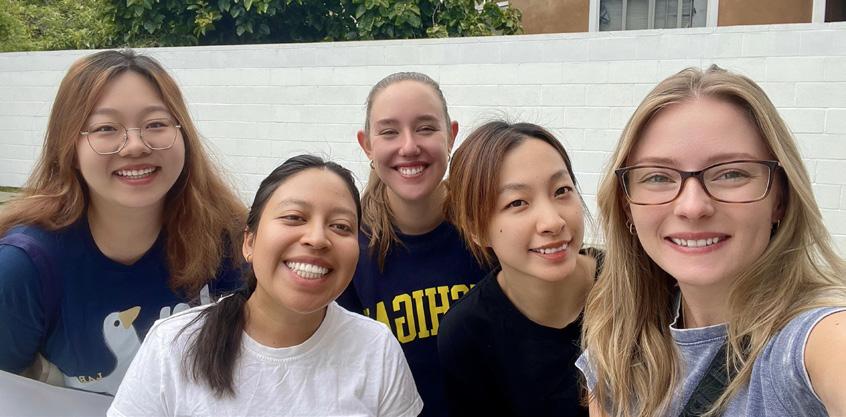


Distributing surveys & semi-structured introduction



Online/offline Promotion: retails, commercials, school, etc,
16

Guidebook for Urban Oilfields 17
Summary
Following a thorough site visit, our team engaged with the voices of Los Angeles residents, gathered crucial data on pollution levels, and conducted comprehensive biological surveys across various sites. Based on our findings, the Inglewood Oil Field exhibits promising potential for pollution remediation and repurposing of abandoned land for further development. In addition to our development proposals, we aim to disseminate these methods, using the Inglewood Oil Field as a successful model for broader adoption.
Our team has formulated three primary development suggestions: remediation, community involvement activation, and utilizing local resources. Our focus is on pioneering an eco-friendly and sustainable framework for rejuvenating the Inglewood Oil Field.
Among various remediation methods, soil remediation stands out as the most advanced. Techniques such as phytoremediation, soil amendment, and fungal remediation have demonstrated efficacy in addressing soil pollution stemming from oil fields.
The diverse array of flora and fauna in the area presents an opportunity for residents to engage in environmental observation and education. Despite soil contamination, we have devised methods for developing urban agriculture using raised beds. This urban farm initiative will provide locals with access to fresh produce while fostering community engagement.
Furthermore, the existing oil wells offer excellent potential for harnessing geothermal energy, while the abundant sunlight hours and intensity in Los Angeles make the Inglewood Oil Field uniquely suited for solar energy utilization.
18
I. Enhance Soil Health
Contaminants of Concern
As Inglewood Oil Field is redeveloped into a sustainable community, there will be many legacy effects of its industrial past. One of these effects is potential contamination of media such as air, soil and water from hydrocarbon extraction. Contaminants such as benzene, toluene, and PAHs, alongside heavy metals and other pollutants, have long-term implications for human and environmental health, influencing our approach to assessing air quality during our site visit.

Air Quality Assessment
During our site visit to the Inglewood Oil Field, we focused on assessing air quality which is a critical component given the field’s history of industrial activities. Our measurements aimed to capture a snapshot of the current state with the portable air quality meter, providing a baseline for the necessary remediation efforts to ensure a safe and healthy transition for the Inglewood Oil Field.
Research Questions
What variations exist in the Air Quality Index(AQI) across different Los Angeles locations?
Which factors most significantly influence the Air Quality Index(AQI) across various Los Angeles locations?

Guidebook for Urban Oilfields 19
1 2 Portable air quality meter

Comparisons
Air quality parameters varied by location and pollutant between August and December. Notably, AQI values shifted from “good” or “moderate” in August to “unhealthy for sensitive groups” at half of the sites in December, indicating increased health risks for sensitive populations.
Table 4. Air Quality Index (AQI) from 8 survey locations in summer and winter. Color corresponds to level of concern; yellow is moderate and green is good.

20
I. Enhance Soil Health
ADeploy Plant Remediation
Annual Plant: Sunflower
Phytoremediation stands out for its use of hyperaccumulator plants to absorb and sequester contaminants from the soil. These diverse arrays of plants are selected based on their ability to thrive in contaminated environments and their efficacy in stabilizing, volatilizing, or degrading harmful substances. Sunflowers have demonstrated a notable proficiency in remediating soils tainted with heavy metals, drawing these contaminants into their tissues, which then requires careful harvest and disposal to prevent secondary contamination.
Canopy Tree: Popular Tree
Transgenic poplar trees have shown potential in metabolizing volatile hydrocarbons and other pollutants associated with petroleum contamination.

Guidebook for Urban Oilfields 21

22
I. Enhance Soil Health
BRecover With Microorganisms
Mycoremediation is a form of bioremediation that utilizes the unique abilities of fungi, such as oyster mushrooms, to break down hydrocarbons present in oil spills. These fungi can degrade complex organic pollutants and are integral to the remediation of petroleum-contaminated sites.
Phytoremediation Synergy Enhancement
Introducing mycorrhizal fungi into contaminated areas not only helps degrade pollutants but also fortifies the symbiotic bond between fungi and plant roots. This enhancement improves the plants’ ability to uptake nutrients and contaminants, leading to a more effective and integrated bioremediation process.
Continuous Monitoring
The effectiveness of mycoremediation requires continuous monitoring of the fungi, particularly their mycelial growth. This oversight is crucial to ascertain the active role of fungi in the detoxification of the soil, ensuring their contribution to the site’s ecological restoration like plants.

Guidebook for Urban Oilfields 23

24
I. Enhance Soil Health
CApply Biosolids For Soil Enrichment
Capping
For the Inglewood Oil Field’s most contaminated areas, where immediate cleanup isn’t feasible, capping is a vital interim strategy. This process involves overlaying a protective barrier on contaminated soil or waste, isolating the pollutants to prevent their migration or contact with humans and wildlifes. Caps range from simple single-layer systems to complex multilayer structures, using materials like clay, concrete, or geomembranes to block water infiltration and gas escape. Capping is essential in areas like the Inglewood Oil Field, where it not only safeguards water resources and air quality but also mitigating risks associated with earthquakes and sground movements.
Biosolids Soil Enrichments
Conversely, for sites amenable to biological treatment, using biosolids—a byproduct of treated municipal wastewater—improves soil health. These biosolids boost soil with nutrients, enhancing fertility, texture, pH balance, and reducing heavy metal toxicity. This aids in plant growth and ecological restoration, especially in areas affected by petroleum contamination or possessing adverse soil characteristics. By incorporating biosolids, contaminated sites can be effectively managed, either by preparing them for future remediation or directly enhancing their ecological function and health.
Guidebook for Urban Oilfields 25

26
II. Activate Community Participation
Inglewood
Oil Field Community Survey
Responses: 100
For this survey from our site visit, our goal is to engage with residents to understand their awareness and expectation of living around urban oil fields. The target population consists of residents from selected communities around the Inglewood Oil Field.
ON-SITE SURVEY TOOLKIT

Type: Online + In-Person Flyer


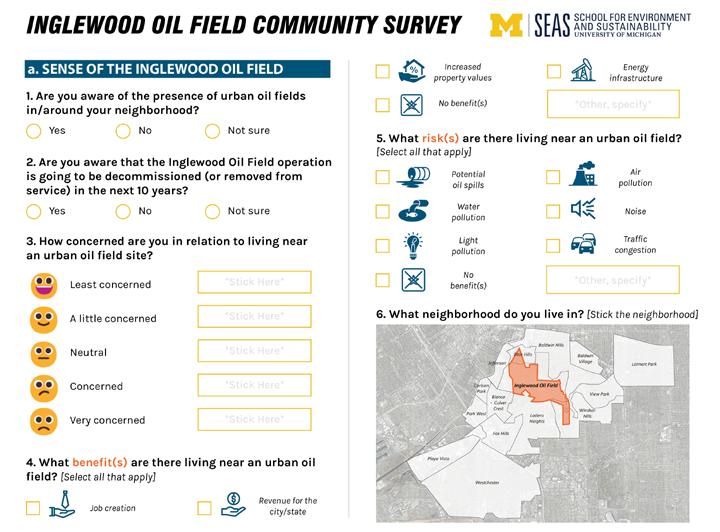

Printed Survey Online Survey Postcard
Guidebook for Urban Oilfields 27
The survey was a mix of multiple choice, rating, and short answer questions. The vast majority of participants (45%) have lived in their neighborhood for more than 10 years. The largest group of participants (77%) have visited lots of adjacent parks near the Inglewood Oil Field.
Insights From The Survey
High awareness of nearby urban oil fields, but limited knowledge of decommissioning plans.
What type of activities and/or design elements would you like to see implemented on the Inglwood Oil Field remediated site?
[Multiple choice question, select all that apply]
Residents anxious about environmental and health risks, along with quality of life impacts due to proximity to oil fields.
Mixed views on benefits: some see job creation and revenue, while others see no benefits against risks and costs.
Majority have long-term residence in the neighborhood, indicating a deep interest in its future development.
Strong desire for transforming oil field into natural, green spaces for recreational and social activities.
Naturalization Passive Recreation Community Gathering Active Recreation Amenities Retail N/A 0 10 20 30 40 50 60 70 80
Awareness v.s. Decommissioning Benefit Perspectives Neighborhood
Proximity Concerns Remediation Preference 83 64 60 51 19 7 75 28
Attachment
II. Activate Community Participation
Urban Biodiversity On-site Observation
Method

Observed Location
Observations were conducted across various urban and natural settings, offering diverse habitats for numerous species. Investigated locations included the Inglewood Oil Field, Kenneth Hahn State Recreation Area (KH), Pan Pacific Park (PP), Whittier Narrows Recreation Area (WN), Playa vista (PV), Baldwin Hills Scenic Overlook (BH).
Guidebook for Urban Oilfields 29

Comparisons
Seasonal comparisons highlighted changes in wildlife activity and vegetation due to recent rainfall and climate. These insights underscore the resilience and adaptability of urban ecosystems to varying conditions.
30
II. Activate Community Participation
AInvestigate Urban Biodiversity Conservation
Habitat Corridor
Habitat corridors are essential in urban redevelopment to link disparate habitat patches, enhancing connectivity and ecological flow. They enable species migration, increase genetic diversity, and facilitate ecosystem recovery, offering benefits like nutrient cycling, pollination, and seed dispersal. In the context of the field under study, potential corridors could connect habitats near West LA College, Culver City Park, and Kenneth Hahn State Recreation Area, integrating these with other natural spaces like Baldwin Hills Scenic Overlook.
The creation of these corridors must balance ecological objectives with the interests of stakeholders, following guidelines like those from the International Union for Conservation of Nature. Effective habitat corridors require clear goals, precise boundary delineation, and an understanding of the socio-economic impacts. These corridors not only support wildlife but can also provide recreational spaces for communities and contribute to local economies, necessitating a collaborative approach for successful implementation and management.
Guidebook for Urban Oilfields 31

32
II. Activate Community Participation
BInvestigate Urban Biodiversity Conservation
Environmental Education
For the Inglewood Oil Field’s sustainable transformation, it’s vital to engage the community through environmental education, emphasizing the area’s biodiversity and cultural diversity. Utilizing multilingual signage and QR codes can enhance accessibility and inclusivity, allowing community members to connect with the local environment and its diverse species.
Effective environmental education is key to addressing the public’s concerns and misconceptions about the oil field’s decommissioning. It empowers the community with knowledge, promoting transparency and consensus-building. Engaging educational programs, including field trips and interactive activities, can deepen the community’s appreciation for local ecosystems and inspire active participation in environmental conservation.
Guidebook for Urban Oilfields 33
MULTILINGUAL SIGNAGE DESIGN ABOUT URBAN SPECIES

34
II. Activate Community Participation
CUrban Farming Initiatives After Soil Remediation
Raised Garden Beds
Implementing raised garden beds at the Inglewood Oil Field allows for safe crop cultivation by protecting residents from contaminated soil. Using mulch on walkways and organic matter in garden beds enhances soil health and reduces contamination risks.
Local Produce Loop
An urban garden at the Inglewood site can address local food deserts, providing fresh produce to communities lacking access and reducing food transportation emissions. This initiative can support local food banks and promote a sustainable urban food system.
Community Connection
Urban agriculture fosters community connections and environmental stewardship. Through participation in gardening activities, residents can reconnect with nature and each other, contributing to a more cohesive and resilient community.
Cooling Urbanized Areas
Incorporating green spaces like urban gardens can cool urban heat islands through evapotranspiration, contributing to a more comfortable and sustainable urban environment at Inglewood Oil Field.
Guidebook for Urban Oilfields 35

36
III. Utilize Local Resources
A Solar Energy Potential
Environmental Benefits
Solar energy reduces carbon emissions, improves air quality, and conserves water compared to traditional energy sources like nuclear power plants.
Economic Advantages
Despite higher initial investment costs, solar energy offers long-term financial benefits, including lower energy costs and increased resilience against energy market volatility.
Supportive Legislation
California has committed to achieving 100% clean energy by 2045, creating a favorable regulatory environment for solar energy adoption. Incorporating solar power into the Inglewood Oil Field aligns with these goals and legislative mandates.
Resilience and Energy Independence
Solar energy can enhance the resilience of urban communities, reducing reliance on external energy sources and mitigating the impact of power outages, particularly in the face of increasing extreme weather events caused by climate change.


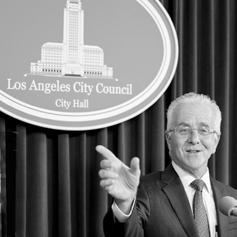

Guidebook for Urban Oilfields 37
Methods
According to an article from ESRI, land with high suitability is barren land with a low-angle, Southern-facing slope.


1. Prepare Data
+ USGS NLCD 2021
+ California 30m DEM

3. Reclassify Slope Layer
+ Assign 1 to slope ≤ 8 degrees, 0 otherwise.


5. Reclassify NLCD Layer
+ Assign 1 to barren land, 0 otherwise.


7. Extract by Mask
+ Clip map to Inglewood
Oil Field boundary.
2. Calculate Slope and Aspect
+ Use DEM data to compute slope and aspect.
4. Reclassify Aspect Layer
+ Assign 1 to southernfacing, 0 otherwise.
6. Overlay Raster Layers
+ Use Raster Calculator: (( “Slope Raster” == 1) & (“Aspect Raster” == 1) & (“Barren Land Raster” == 1),1).
38


Guidebook for Urban Oilfields 39
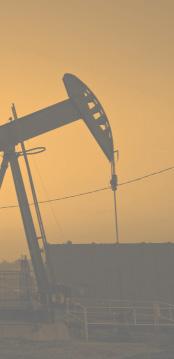
Inglewood Oil Field
Solar Energy Potential Areas

40
III. Utilize Local Resources
BGeothermal Energy Potential
Environmental Benefits
The Inglewood Oil field, slated for decommissioning, offers potential for transitioning to carbon neutrality through the implementation of renewable energy sources, particularly geothermal energy.
Oil Field Advantages
Repurposing abandoned oil wells for geothermal energy extraction, utilizing existing infrastructure and minimizing additional drilling.
Geographic Advantages
A study by done Stanford University indicates promising geothermal gradients and water production rates in the Los Angeles Basin, including the Inglewood Oil Field.
Economic Advantages
The Inglewood Oil field could generate approximately 580 kW of power over 30 years, yielding a net present value of $3.2 million.



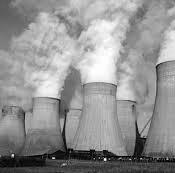
Guidebook for Urban Oilfields 41
Methods
For the scope of this project, a preliminary analysis was executed in ArcGIS Pro with data on oil and gas wells from Enverus, a well known US energy platform.

1. Prepare Data
+ Oil and gas well data from Enverus
+ Select oil extraction wells with active production status.
+ Reproject the selected well points to NAD 1983 (US Foot)
StatePlane California Zone 5.

2. Interpolation of Key Parameters
+ Extract data on water production and total depth.
+ Utilize Kriging interpolation method to generate raster layers for water production and depth.
+ Reclassify the interpolated raster layers using the natural breaks method into five classes each.

3. Weighted Overlay Analysis
+ Perform a weighted overlay analysis with reclassified raster layers.
+ Assign a weight of 65% to water production and 35% to depth.
+ Use raster calculator to select values in the first category, representing the most desirable areas.

4. Visualization
+ Layer the resulting output of the weighted overlay analysis with the original well point data to visualize the locations of the most suitable wells for geothermal implementation in the Inglewood Oil Field.
42

Guidebook for Urban Oilfields 43

Suitable Wells
Inglewood Oil Field
Most Suitable
Moderately Suitable
Somewhat Suitable
Least Suitable
44
Guidebook for Urban Oilfields 45
How to measure the success of landscape transition? Conclusion
46
Soil Remediation
1. Define the area of interest.
2. Establish a clear and consistent set of indicators.
3. Establish a baseline.
+ Collect baseline data before implementing interventions for comparison.
4. Collect sustainable and reproducible input data.
+ Gather sustainable, reproducible data at regular intervals using consistent methods.
+ Validate data for accuracy and reliability.
5. Report results.
+ Communicate progress and findings to decision-makers and stakeholders.
Urban Agriculture
1. Environmental Resilience
+ Monitor air quality regularly.
+ Use satellite imagery to track surface temperatures.
+ Assess pollinator presence for biodiversity.
2. Community Engagement and Partnerships
+ Evaluate local participation in food cultivation.
+ Partner with organizations like LA Food Policy Council and LA Compost.
+ Engage community groups to support workforce needs.
Guidebook for Urban Oilfields 47
Renewable Energy
1. Technical Efficiency
+ Monitor capacity factor, availability factor, energy yield, and performance ratio for system performance.
2. Financial Viability
+ Analyze NPV, IRR, and payback period for financial returns.
+ Conduct long-term studies for modeling sustainability.
3. Environmental Impact
+ Quantify carbon emissions reduction and water savings.
+ Inform future sustainability efforts and promote renewable energy adoption.
Conclusion
In conclusion, our Inglewood Oil Field remediation recommendations prioritize sustainability and inclusivity. By integrating diverse perspectives and innovative techniques, including comprehensive planting initiatives and pioneering soil amendments, we aim to foster a healthy transformation for the area. While ongoing research and monitoring are necessary, our recommendations provide a robust framework for advancing toward a more sustainable future.
48
 Sunset View of Inglewood Oil Field
Sunset View of Inglewood Oil Field






 Packard Well Site, West Pico Drill Site and Beverly Center sites.
Photo: Inglewood Research Team
La BreaTar Pits located in Hancock Park - summer season.
Packard Well Site, West Pico Drill Site and Beverly Center sites.
Photo: Inglewood Research Team
La BreaTar Pits located in Hancock Park - summer season.



















































